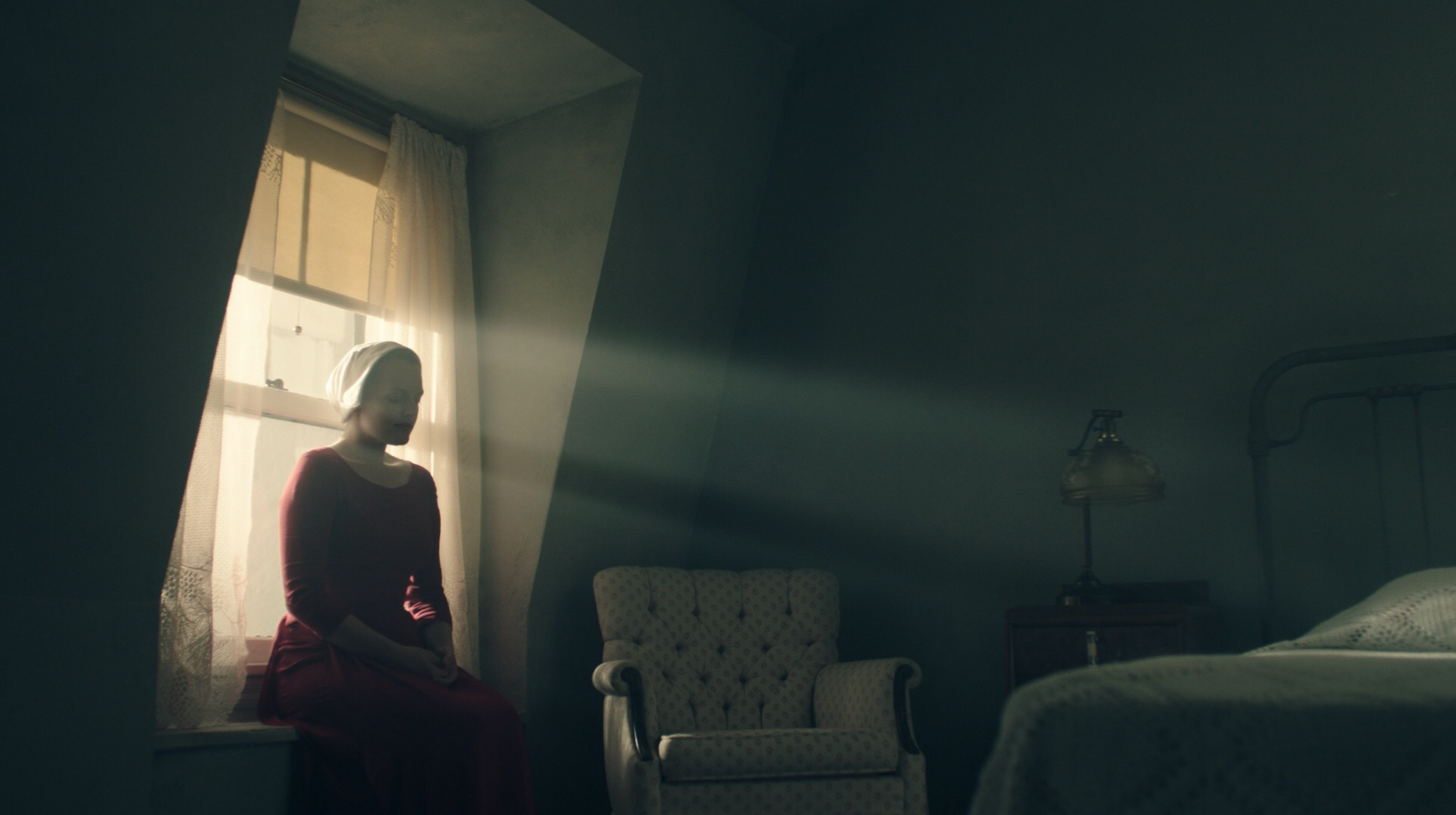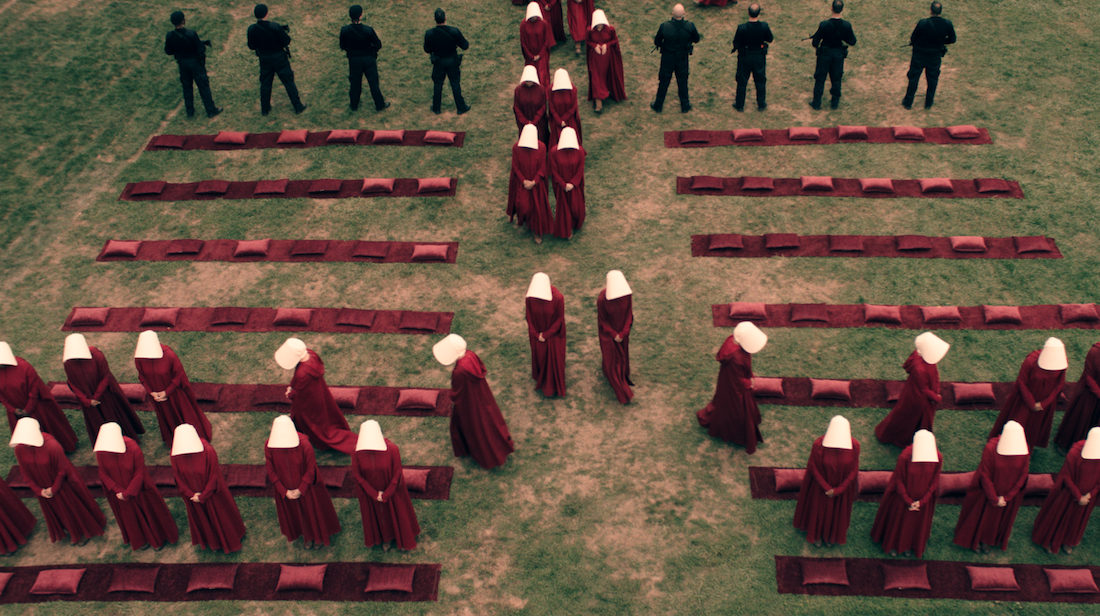The Handmaid’s Tale DP on Using Old Lenses, Vermeer and Drones to Conjure Dystopia
Liverpool-born cinematographer Colin Watkinson quit his job as a surveyor to work as an entry-level “runner” on a British soundstage, rose through the ranks to shoot Tarsem Singh’s The Fall in 2006, and on the strength of that film’s universally hailed visuals, became one of Los Angeles’ most prolific television commercial DPs. By the time cinematographer-turned director Reed Moreno invited him to shoot The Handmaid’s Tale in Toronto, he had a signature style firmly in place.
So did she.
Watkinson recalls, “Reed knows exactly what she likes and when I got there, she’d done color palettes and this that and the other, so I said, ‘Let’s be honest, you haven’t really left me much to do. What am I doing here?’ And Reed said, ‘I’ve got a plan.'” That plan helped earn an Emmy nomination for Watkinson, one of 11 nods for The Handmaid’s Tale. Morano, formerly a cinematographer herself on indie stand-outs including Frozen River and Kill Your Darlings, wanted to combine her own “visceral” approach with the elegant compositions showcased in Watkinson’s work, he says. “Between the Kubrick-like style I’d been building since ‘The Fall‘ and her style, Reed thought the combination would be fantastic. So I just started doing my thing.”
Working with Alexa ARRI 4K cameras, Watkinson framed one of the show’s most striking scenes by showing Offred (Elisabeth Moss) silhouetted in her handmaid outfit, sunlight pouring through the window of her spartan room, while she describes life as a sex slave in a voice-over. The lustrous image resembles Dutch renaissance oil paintings, and in fact, Watkinson says, “Vermeer was a great reference for that shot. Reed wanted lots of atmosphere so I found this Mole Beam spotlight that produces beautiful volumetric lighting. I used it to light the air and layer the image up, like the old oil painters did. They’d go over the painting again and again and again to build it up, and that’s what I tried to do with light.”

Elizabeth Moss is Offred in The Handmaid’s Tale. Courtesy Hulu.
https://www.youtube.com/watch?v=Dre0wQmLGe8
Watkinson credits the scene’s “stylized realism” to a tightly coordinated group effort. “The colors came together so beautifully because of the gorgeous wall textures from production designer Julie Berghoff and the costumes by Ane Crabtree. We talked about color in prep and nobody went off on their own tangent. It was like a conjoining of heads, which is what you’re always looking for when you make a film.”
For the pilot episode’s climactic group portrait (spoiler alert), dozens of handmaids gather in orderly fashion on a bucolic lawn until “Aunt Lydia” (Ann Dowd) blows a whistle and they beat a man to death, “Reed wanted it to be epic and since we had these great visuals of the women in their costumes, we decided to shape them up in the symmetrical style of Kubrick,” Watkinson explains. “We had them come out of the forest and line up like they’re in school. Following the handmaids as they go through their little procedures allowed us to create some really graphic frames.”

Courtesy Hulu.
Watkinson used a drone-mounted camera to capture a bird’s eye view of the pastoral setting. He says, “Reed’s not a fan of drones but I argued that drones work well if you use them properly and there’s a reason for the camera to move. So we used a drone to track these lovely flowing red dresses coming out of the forest greenery, and then had a 50-foot Technocrane for the rest of the overhead shots when the girls are beating the crap out of the guy.”
Throughout scenes both grandiose and intimate, Watkinson kept his camera attuned to he central character’s point of view. While everything else in the show was shot on Canon K35 lenses manufactured in the 1970s, Watkinson used a slightly harder Zeiss 28 millimeter lens whenever he filmed Moss in close-up. “Right there from the title, ‘The Handmaid’s Tale,’ you know this is a POV show, so nearly all the cinematography is about Offred and internalizing her experience,” he says. “For the series to work, we needed that balance between the epic and the intimate so that when we go super close into Elizabeth’s face during this emotional beating scene, you don’t feel it’s too claustrophobic. You’ve had the breather, the overhead shots, and now you’re ready for some intensity.”
https://www.youtube.com/watch?v=PJTonrzXTJs
https://www.youtube.com/watch?v=PJTonrzXTJs



